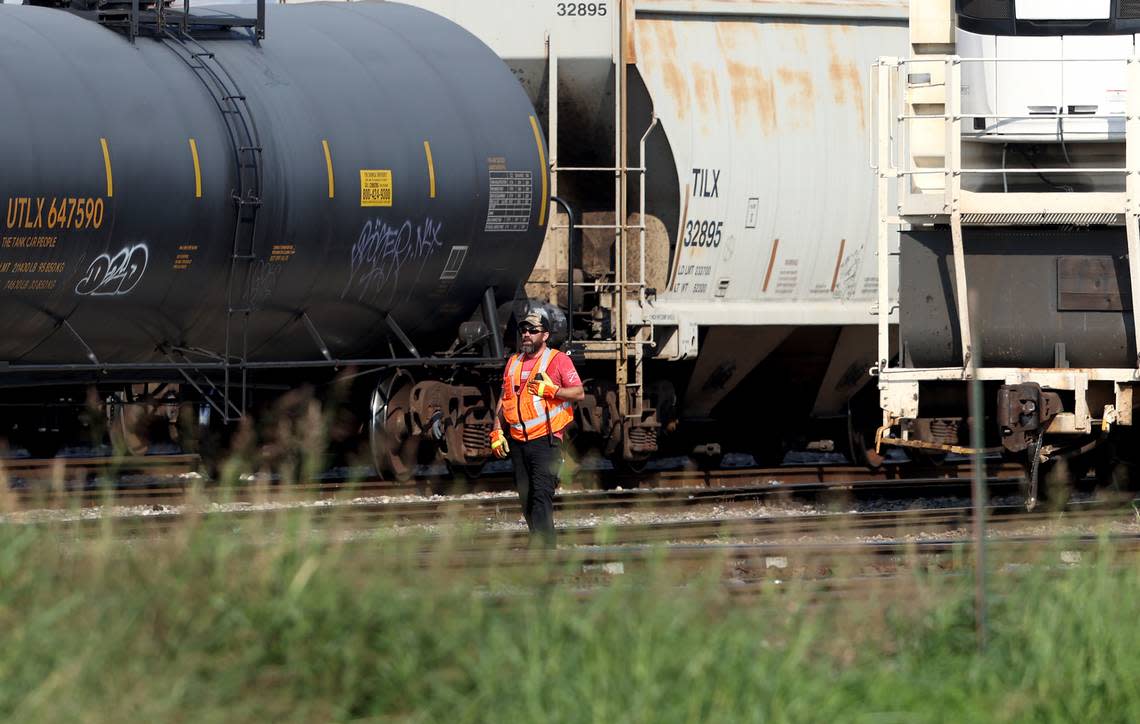U.S. rail agreement was presented as a done deal. Now that they’ve seen it, workers disagree

While the Biden-brokered agreement reached last week was hailed as a solution to the national railroad dispute, some rail workers are finally seeing the details of the deal, and, for many rank-and-file members, the matter is far from settled.
They say it doesn’t address the most critical issue at hand: quality of life for railroad workers.
SMART Transportation Division, one of the unions representing rail workers, released a draft of the agreement to members Thursday. The Star-Telegram obtained a copy of the document.
As expected, the agreement contains a cumulative 24% raise over five years as well as a yearly $1,000 signing bonus. Health care premiums will increase by 2.4%; members will pay 15% of premiums.
The agreement provides one additional personal leave day. It also allows members to attend three annual routine or preventive health care visits. However, those appointments must be scheduled at least 30 days in advance, and must take place on a Tuesday, Wednesday or Thursday.
“Note that this is the first time the Carriers have ever agreed to bargain over attendance policies on a national scale, and it opens the door for future negotiation over these issues!” the agreement read.
For Jon Hauger, a conductor who works for BNSF out of Houser, Idaho, the deal’s attempt at providing medical leave is “a complete joke.”
“You can’t plan out 30 days in advance,” he said. “It’s offensive.”
The importance of medical leave for railroad workers is underscored in a Sept. 17 story by the Washington Post about a BNSF worker who put off a medical appointment and died of a heart attack weeks later on June 16.
Out of fear of getting penalized by BNSF’s attendance policy, Aaron Hiles, 51, went to work when he was unexpectedly called in, causing him to miss his appointment.
Now that he’s read the tentative agreement, Hauger feels the agreement was the result of behind-the-scenes political deal-making aimed at protecting Democrats ahead of the midterm elections.
“This was 100% a way to avert a strike by an industry that is the very backbone of this nation’s economy prior to the midterms,” he said. “It would have been an absolute death knell for the Dems had we gone on strike.”
He plans to vote “no” on the agreement. Many of his coworkers both at his terminal and among communities online are planning to do the same.
Chris Bond, chairperson of Fort Worth’s SMART-TD chapter, did not respond to requests for comment.
Fort Worth-based railroad BNSF stands by the agreement reached last week.
“BNSF is pleased that the railroads have reached tentative agreements with all 12 unions and that two of those unions have already ratified. BNSF team members drive our success, and we couldn’t deliver the nation’s goods without them,” said Zak Andersen, vice president of corporate communications at the company.
Mere hours before the deal was announced Sept. 15, hundreds of rank-and-file workers across all rail crafts met as the Railroad Workers Rank-and-File Committee.
The committee calls for an end to “brutal” attendance policies, including “Hi Viz,” which was adopted at BNSF in February. Under Hi Viz, workers have 30 points, which are deducted for days they take off. Workers can earn points back if they are available to work for 14 days straight.
The next step in the agreement ratification process is a 15-day question and answer period for general chairpersons that will expire on Oct. 7. Following that period, the negotiating committee will meet with carriers’ representatives to determine answers to the list of questions.
A member ratification vote is expected to begin in mid- to late October, according to the document.
While it would be unusual for members to vote down the agreement after President Joe Biden got so involved in making the deal happen, it wouldn’t be unprecedented, said Joseph McCartin, a labor historian and professor of history at Georgetown University.
“In 1996, the United Transportation Union (now SMART-TD) rejected a TA and the union’s leaders joined with rail carriers to submit the rejected TA to binding arbitration. So a rejection doesn’t automatically mean a strike,” he said.
However, “the current mood of workers though could make a rejection in this case more likely than it would have been several years ago,” he added.
For example, last year, John Deere workers rejected two tentative agreements between the United Auto Workers and John Deere. The strike lasted more than a month and was John Deere’s first strike in more than 30 years.

